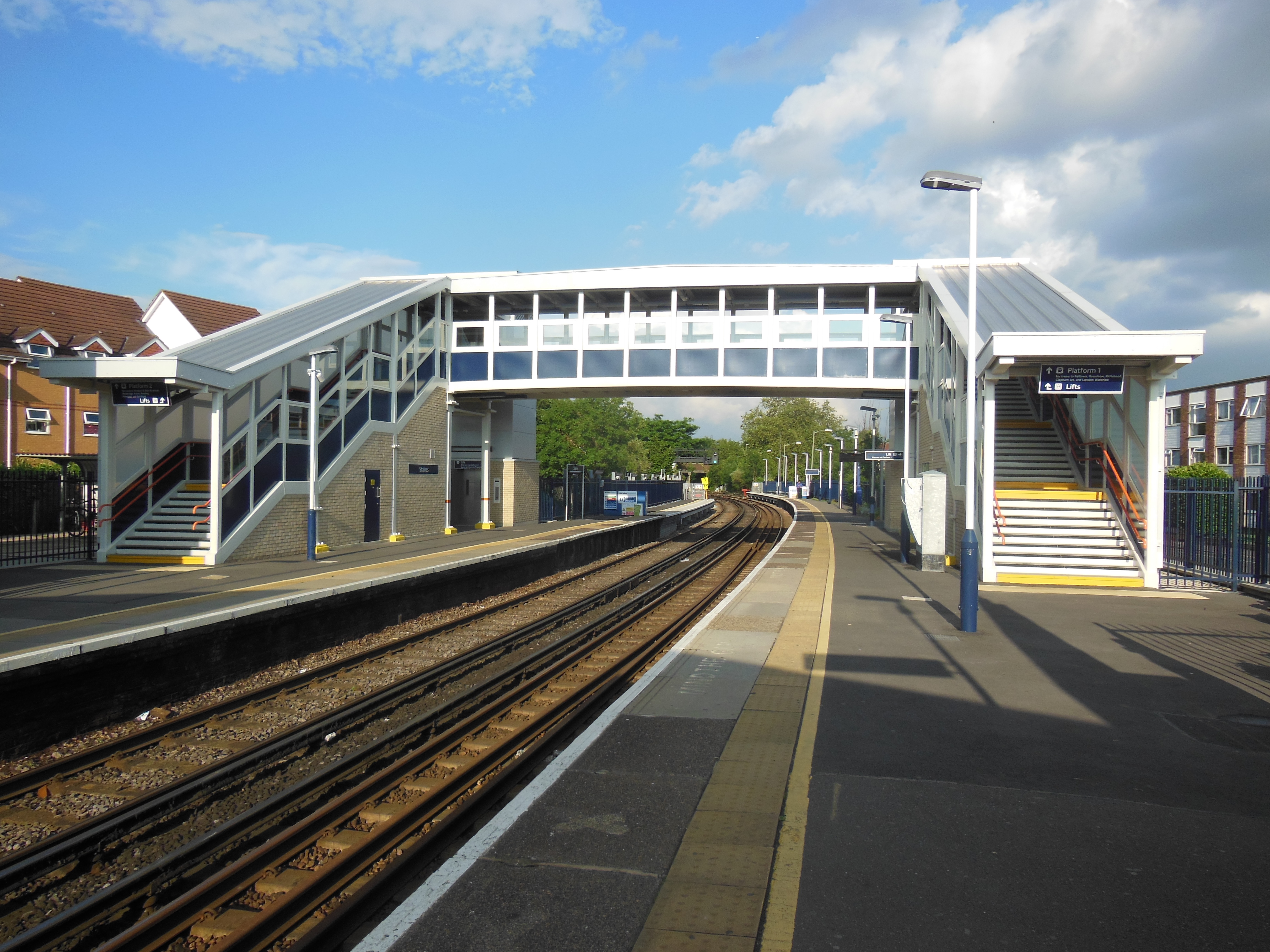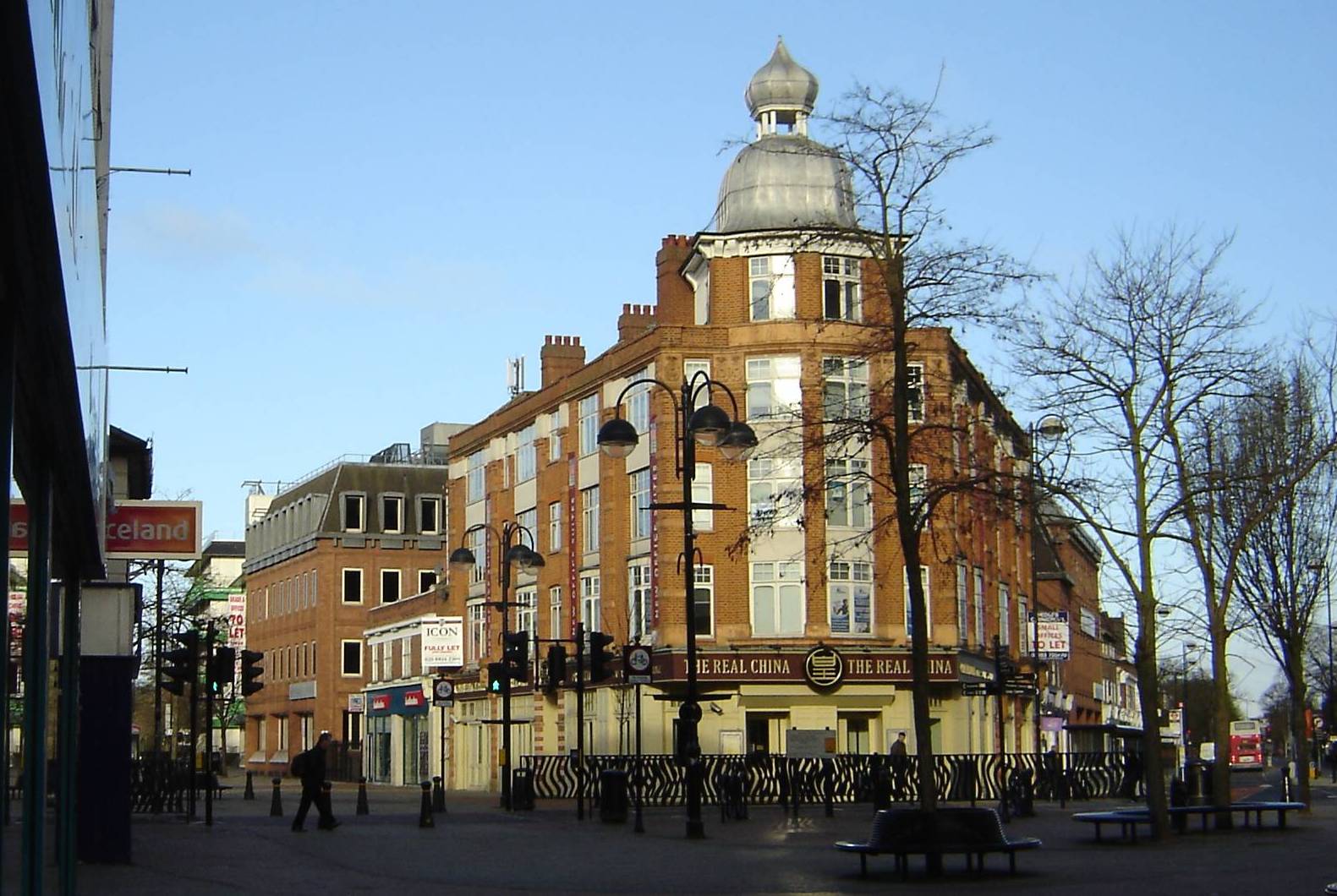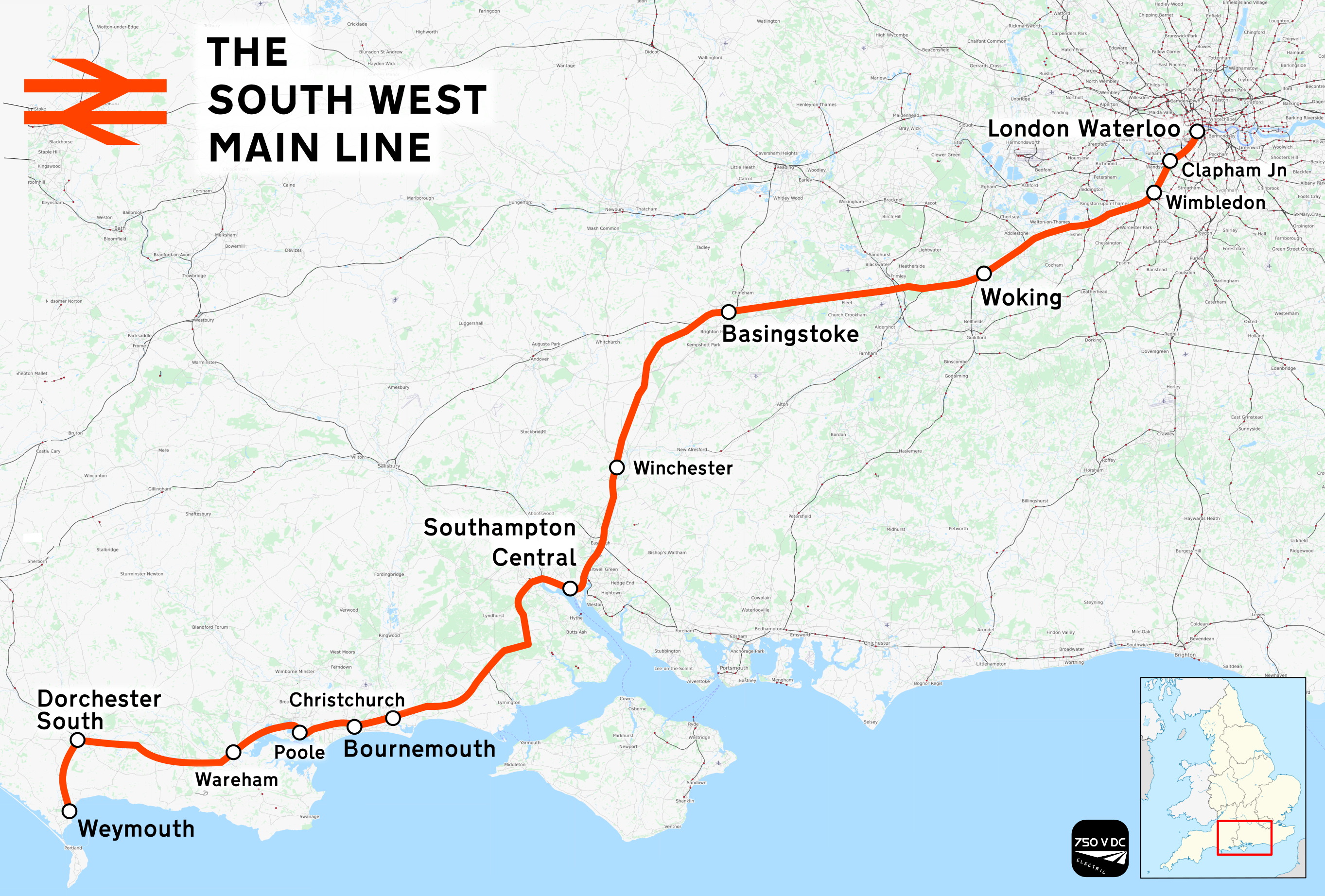|
Queenstown Road Railway Station
Queenstown Road is a railway station in inner south-west London, south-west of , between and . It is a short walk from Battersea Park station and Battersea Park to the west. It has three platforms, two of which are in use by all stopping services related to the Waterloo to Reading Line: its branch services to Weybridge (via Hounslow) and two separate sets of bidirectional Waterloo-to-Waterloo services via Hounslow using the Hounslow Loop and via Kingston using the Kingston Loop. In addition, 50% of maximum peak hour trains serving the Shepperton branch line call at the station. History The station was opened on 1 November 1877, by the London and South Western Railway, as ''Queen's Road (Battersea)''. The entrance still bears the name Queen's Road, not to be confused with Queens Road Peckham, Walthamstow Queen's Road or Queensway Underground station, which was also originally called Queens Road. Queen's Road was also the name of the road in which the station is loc ... [...More Info...] [...Related Items...] OR: [Wikipedia] [Google] [Baidu] |
South Western Railway (train Operating Company)
First MTR South Western Trains Limited, trading as South Western Railway (SWR), is a British train operating company owned by FirstGroup (70%) and MTR Corporation (30%) that operates the South Western franchise. During March 2017, it was announced that SWR had been awarded the South Western franchise. On 20 August 2017, it took over operations from the previous franchisee South West Trains. SWR operates commuter services from its Central London terminus at London Waterloo railway station, London Waterloo to south west London. SWR provides suburban services in the counties of Surrey, Hampshire and Dorset, as well as regional services in Devon, Somerset, Berkshire and Wiltshire. Its subsidiary Island Line (train operating company), Island Line operates services on the Isle of Wight. Rolling stock changes have included a comprehensive refurbishment of existing units and the acquisition of new-build British Rail Class 701, Class 701 units from Bombardier Transportation, Bombardier ... [...More Info...] [...Related Items...] OR: [Wikipedia] [Google] [Baidu] |
Queensway Tube Station
Queensway is a London Underground station on the Central line in Bayswater, just inside the boundary of the City of Westminster with the Royal Borough of Kensington and Chelsea. It is at the junction of Queensway and Bayswater Road, and is opposite the north-west corner of Kensington Gardens. It is between to the west and to the east, and is in Travelcard Zone 1. History It opened on 30 July 1900, as ''Queen's Road'', and was renamed on 1 September 1946. The building is an unusual survivor of the buildings designed for the Central London Railway by Harry Bell Measures, with a flat roof so that commercial development could take place above – in this case, a hotel. The Coburg hotel opened in 1907: its design features three cupolas, over shops and Queensway station. The station today There is a crossover east of the station to allow trains to terminate there. The crossover is not often used. Refurbishment The station was closed between 8 May 2005 and 14 June 2006 for refurbi ... [...More Info...] [...Related Items...] OR: [Wikipedia] [Google] [Baidu] |
London Buses Route 137
London Buses route 137 is a Transport for London contracted bus route in London, England. Running between Streatham Hill and Marble Arch, it is operated by Arriva London. History In the 1930s, STL buses were used on this route which ran from Highgate to Elmers End. The AEC Routemaster buses which operated route 137 since 1 November 1964 were replaced by one-person operated Wright Pulsar Gemini bodied DAF DB250s on 10 July 2004, ending a remarkable forty years of service New Routemasters were introduced on 6 December 2014. The rear platform remains closed at all times except for when the bus is at bus stops. On 15 July 2017 route 137 was permanently curtailed to Marble Arch and no longer serves Oxford Street. Current route Route 137 operates via these primary locations: Transport for London * |
London Buses
London Buses is the subsidiary of Transport for London (TfL) that manages most bus services in London, England. It was formed following the Greater London Authority Act 1999 that transferred control of London Regional Transport (LRT) bus services to TfL, controlled by the Mayor of London. Overview Transport for London's key areas of direct responsibility through London Buses are the following: * planning new bus routes, and revising existing ones * specifying service levels * monitoring service quality * management of bus stations and bus stops * assistance in 'on ground' set up of diversions, bus driver assistance in situations over and above job requirements, for example Road Accidents * providing information for passengers in the form of timetables and maps at bus stops and online, and an online route planning service * producing leaflet maps, available from Travel Information Centres, libraries etc., and as online downloads. * operating NMCC, London Buses' 24‑hour c ... [...More Info...] [...Related Items...] OR: [Wikipedia] [Google] [Baidu] |
Vauxhall Station
Vauxhall (, ) is a National Rail, London Underground and London Buses interchange station in central London. It is at the Vauxhall Cross road junction opposite the southern approach to Vauxhall Bridge over the River Thames in the district of Vauxhall. The mainline station is run by the South Western Railway and is the first stop on the South West Main Line from towards and the south-west. The Underground station is on the Victoria line and the station is close to St George Wharf Pier for river services. The station was opened by the London and South Western Railway in 1848 as Vauxhall Bridge station. It was rebuilt in 1856 after a large fire, and given its current name in 1862. In the early 20th century, Vauxhall saw significant use as a stop for trains delivering milk from across the country into London. The tube station opened in 1971 as part of the Victoria line extension towards Brixton, while the bus station opened in 2004. It remains an important local interchange on ... [...More Info...] [...Related Items...] OR: [Wikipedia] [Google] [Baidu] |
Clapham Junction Railway Station
Clapham Junction railway station () is a major railway station and transport hub near St John's Hill in south-west Battersea in the London Borough of Wandsworth. It is from and from ; it is on both the South West Main Line and Brighton Main Line as well as numerous other routes and branch lines passing through or diverging from the main lines at this station. Despite its name, Clapham Junction is not located in Clapham, a district situated approximately to the south-east and is instead sited in Battersea. Routes from London's south and south-west termini, Victoria and Waterloo, funnel through the station, making it the busiest in Europe by number of trains using it: between 100 and 180 per hour except for the five hours after midnight. The station is also the busiest UK station for interchanges between services, and the only railway station in Great Britain with more interchanges than entries or exits. History On 21 May 1838 the London and Southampton Railway became the Lon ... [...More Info...] [...Related Items...] OR: [Wikipedia] [Google] [Baidu] |
Kingston (London) Railway Station
Kingston railway station is in Kingston upon Thames in south-west London. It is down the line from . The station and all trains serving it are operated by South Western Railway. It is in Travelcard Zone 6. History The station opened on 1 July 1863 as "Kingston Town", to distinguish it from the earlier Kingston station (which became ) on the South West Main Line. It was then the terminus of the London & South Western Railway branch line from . The platforms built when the line was prolonged in 1869 to connect to the South West Main Line were named "Kingston High Level". The Southern Railway rebuilt and unified the station in 1935. In August 2010 it was refurbished, with the entrance, but not the concourse, moving a few metres to face Wood Street instead of being at the corner formed by Wood Street and Richmond Road, and the independent shop was replaced by a WHSmith and a Costa Coffee shop. In common with the 16 hourly off-peak closer commuter services to/from London Water ... [...More Info...] [...Related Items...] OR: [Wikipedia] [Google] [Baidu] |
Richmond (London) Railway Station
Richmond, also known as Richmond (London), is a National Rail station in Richmond, Greater London on the Waterloo to Reading and North London Lines. South Western Railway services on the Waterloo to Reading Line are routed through Richmond, which is between and St Margarets stations, down the line from . For London Overground and London Underground services, the next station is . Architecture The station building, designed by James Robb Scott in Portland stone and dating from 1937, is in Art Deco style and its facade includes a square clock. The area in front of the station main entrance was pedestrianised in 2013 and includes a war memorial to soldier Bernard Freyberg, who was born in Richmond. History The Richmond and West End Railway (R&WER) opened the first station at Richmond on 27 July 1846, as the terminus of its line from . This station was on a site to the south of the present through platforms, which later became a goods yard and where a multi-storey car park now ... [...More Info...] [...Related Items...] OR: [Wikipedia] [Google] [Baidu] |
Staines Railway Station
Staines railway station is on the Waterloo to Reading line and is the junction station for the diverging Windsor line, in southern England to the west of London. It is down the line from . History The station was opened on 22 August 1848 by the Windsor, Staines and South Western Railway, as part of its line from Richmond to . The line was further extended from Datchet to on 1 December 1849, by which time the Windsor, Staines and South Western Railway had become part of the London and South Western Railway (LSWR). The junction at Staines, together with the line to was authorised in 1853 and built by the Staines, Wokingham and Woking Junction Railway, opening as far as on 4 June 1856 and onwards to Wokingham on 9 July 1856. From the outset, the line was leased to, and operated by, the LSWR, who purchased it outright in 1878. From Wokingham, LSWR trains continued to using running powers over the South Eastern Railway (SER).Mitchell, Vic and Smith, Keith (1989) Branch lin ... [...More Info...] [...Related Items...] OR: [Wikipedia] [Google] [Baidu] |
Hounslow Railway Station
Hounslow () is a large suburban district of West London, west-southwest of Charing Cross. It is the administrative centre of the London Borough of Hounslow, and is identified in the London Plan as one of the 12 metropolitan centres in Greater London. It is bounded by Isleworth to the east, Twickenham to its south, Feltham to its west and Southall to its north. Hounslow includes the districts of Hounslow West, Heston, Cranford and Heathrow. Although most of the district lay within the London Borough of Hounslow, some parts fall within the London Borough of Richmond upon Thames and the London Borough of Hillingdon including Heathrow Airport. Most of Hounslow, including its Town Centre, the area south of the railway station and the localities of Lampton and Spring Grove, falls under the TW3 postcode. The TW4 postcode is made up of Hounslow West and parts of Cranford, whilst the TW5 postcode includes Heston and Cranford. Heathrow Airport and parts of Hatton comprise ... [...More Info...] [...Related Items...] OR: [Wikipedia] [Google] [Baidu] |
London Waterloo Station
Waterloo station (), also known as London Waterloo, is a London station group, central London terminus on the National Rail network in the United Kingdom, in the Waterloo, London, Waterloo area of the London Borough of Lambeth. It is connected to a London Underground Waterloo tube station, station of the same name and is adjacent to Waterloo East station on the South Eastern Main Line. The station is the terminus of the South West Main Line to via Southampton, the West of England main line to Exeter via , the Portsmouth Direct line to which connects with ferry services to the Isle of Wight, and several commuter services around west and south-west London, Surrey, Hampshire and Berkshire. The station was opened in 1848 by the London and South Western Railway, and it replaced the earlier as it was closer to the West End of London, West End. It was never designed to be a terminus, as the original intention was to continue the line towards the City of London, and consequently t ... [...More Info...] [...Related Items...] OR: [Wikipedia] [Google] [Baidu] |
South West Main Line
The South West Main Line (SWML) is a 143-mile (230 km) major railway line between Waterloo station in central London and Weymouth on the south coast of England. A predominantly passenger line, it serves many commuter areas including south western suburbs of London and the conurbations based on Southampton and Bournemouth. It runs through the counties of Surrey, Hampshire and Dorset. It forms the core of the network built by the London and South Western Railway, today mostly operated by South Western Railway. Network Rail refers to it as the South West Main Line. Operating speeds on much of the line are relatively high, with large stretches cleared for up to running. The London end of the line has as many as eight tracks plus the two Windsor Lines built separately, but this narrows to four by and continues this way until Worting Junction west of , from which point most of the line is double track. A couple of miles from the Waterloo terminus, the line runs briefly alongside ... [...More Info...] [...Related Items...] OR: [Wikipedia] [Google] [Baidu] |
%2C_6_March_2004.jpg)
_Metroline_London_New_Routemaster.jpg)


.jpg)



